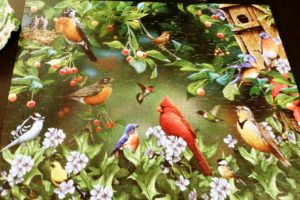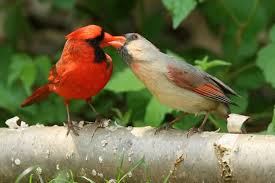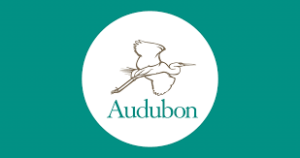» posted on Monday, July 6th, 2020 by Linda Lou Burton
Birds of a Feather
Linda Lou Burton posting from Little Rock, Arkansas – “Are you a bird watcher? Can you recognize bird calls? There is a particular bird I hear all the time around here that I can’t pinpoint. I’m going to do some research this morning on it.” Those questions were posed to me in my early morning weekly email from friend Rita today.
 The answer is Yes, and No. My Katy cat and I are inveterate bird watchers, though I suspect for vastly different reasons. (I don’t view them as potential “dinner,” I watch because birds are beautiful, and smart.) My Birds of Arkansas Field Guide by Stan Tekiela is clogged with paperclips as I mark every species of bird I spot in my yard, more than 20 so far.
The answer is Yes, and No. My Katy cat and I are inveterate bird watchers, though I suspect for vastly different reasons. (I don’t view them as potential “dinner,” I watch because birds are beautiful, and smart.) My Birds of Arkansas Field Guide by Stan Tekiela is clogged with paperclips as I mark every species of bird I spot in my yard, more than 20 so far.
Brown-headed Cowbird * Downy Woodpecker * Eastern Bluebird * Blue Jay * Pine Siskin * House Finch * House Sparrow * White-throated Sparrow * Northern Cardinal * Brown Thrasher * Mourning Dove * Red-breasted Nuthatch * White-breasted Nuthatch * Dark-eyed Junco * American Robin * Ruby-throated Hummingbird * House Finch * American Goldfinch * Northern Mockingbird
I can identify these birds because Tekiela’s book includes gorgeous color pictures, as well as detailed descriptions of a bird’s size, and habits. Even their sounds, but there are so many that my answer is “No, Rita I do not recognize bird calls.” I can tell when a call is quarrelsome (and they do get into quarrels around the feeders!). And we all recognize the squawk of a blue jay or the disagreeable sounds that a crow makes, strutting around the yard like the King of Sheba.
 My favorite is the Northern Cardinal, an elegant bird of medium size (8”-9”) with a reddish-orange beak and a black mask. The male is a vivid red, but the female is buff brown with tinges of red on her crest; with the same black mask and orange beak. I’ve noted that the male and female often come to the feeder as a pair; the male first to “check it out;” then he watches as she feeds. He makes a good husband and father – during courtship the male feeds the female; he also feeds the young of the first brood while she builds the second nest.
My favorite is the Northern Cardinal, an elegant bird of medium size (8”-9”) with a reddish-orange beak and a black mask. The male is a vivid red, but the female is buff brown with tinges of red on her crest; with the same black mask and orange beak. I’ve noted that the male and female often come to the feeder as a pair; the male first to “check it out;” then he watches as she feeds. He makes a good husband and father – during courtship the male feeds the female; he also feeds the young of the first brood while she builds the second nest.  They live in “cup” nests and generally produce 2-3 broods a year, so your yard might have a number of fledglings throughout the summer. Cardinals are non-territorial in the winter time, hanging around Arkansas as non-migrators and gathering in small flocks of up to 20 birds at a time. And their call is, most appropriately Rita, “whata-cheer-cheer-cheer.”
They live in “cup” nests and generally produce 2-3 broods a year, so your yard might have a number of fledglings throughout the summer. Cardinals are non-territorial in the winter time, hanging around Arkansas as non-migrators and gathering in small flocks of up to 20 birds at a time. And their call is, most appropriately Rita, “whata-cheer-cheer-cheer.”
Bird-watching is a great activity to take up anytime, but now with quarantines and social distancing guidelines in place, it goes to the top of the list as an easy, inexpensive, and highly entertaining way to spend time. It is great for young kids, old fogies, and everyone who has a minute, or a long day, stretching ahead. I just sent a hummingbird feeder kit to the mother of a four-year-old tasked with entertaining an energetic little one all summer – in addition to the feeder itself is a pack of wildflower seeds to plant, and tend to, and a book about the hummingbird, one of the hardiest critters God ever created.
 Start your birdwatching with a simple feeder outside a window. You can watch birds coming and going and feeding and chatting from inside your air-conditioned house. If you’re really serious about attracting and caring for birds, create a wildlife habitat in your yard. Birds need a few simple things: cover and places to safely raise their young, and water and food sources. To have your habitat certified by the National Wildlife Federation, you must follow sustainable practices such as reducing lawn size, using native plants, and eliminating chemical pesticides and fertilizers.
Start your birdwatching with a simple feeder outside a window. You can watch birds coming and going and feeding and chatting from inside your air-conditioned house. If you’re really serious about attracting and caring for birds, create a wildlife habitat in your yard. Birds need a few simple things: cover and places to safely raise their young, and water and food sources. To have your habitat certified by the National Wildlife Federation, you must follow sustainable practices such as reducing lawn size, using native plants, and eliminating chemical pesticides and fertilizers.
Besides being a simple bird lover, who finds birds fascinating creatures (yes, they crap on the porch, so what), I am a member of two organizations I recommend to everyone. Yes, they will ask you for money (again, so what).
 One is the National Audubon Society, whose mission is “to protect birds and the places they need, today and tomorrow. We conserve and restore natural ecosystems, focusing on birds and their habitats, for the benefit of humanity and the earth’s biological diversity.” https://www.audubon.org/
One is the National Audubon Society, whose mission is “to protect birds and the places they need, today and tomorrow. We conserve and restore natural ecosystems, focusing on birds and their habitats, for the benefit of humanity and the earth’s biological diversity.” https://www.audubon.org/
 The other is the National Wildlife Federation, whose statement “We Believe” goes like this: America’s experience with cherished landscapes and wildlife has helped define and shape our national character and identity for generations. Protecting these natural resources is a cause that has long united Americans from all walks of life and political stripes. To hunters, anglers, hikers, birders, wildlife watchers, boaters, climbers, campers, cyclists, gardeners, farmers, forest stewards, and other outdoor enthusiasts, this conservation ethic represents a sacred duty and obligation to protect and build upon our conservation heritage for the sake of wildlife, ourselves, our neighbors, and—most of all—for future generations. https://www.nwf.org/
The other is the National Wildlife Federation, whose statement “We Believe” goes like this: America’s experience with cherished landscapes and wildlife has helped define and shape our national character and identity for generations. Protecting these natural resources is a cause that has long united Americans from all walks of life and political stripes. To hunters, anglers, hikers, birders, wildlife watchers, boaters, climbers, campers, cyclists, gardeners, farmers, forest stewards, and other outdoor enthusiasts, this conservation ethic represents a sacred duty and obligation to protect and build upon our conservation heritage for the sake of wildlife, ourselves, our neighbors, and—most of all—for future generations. https://www.nwf.org/
Check it out. You know the rhyme: birds of a feather, stick together.
